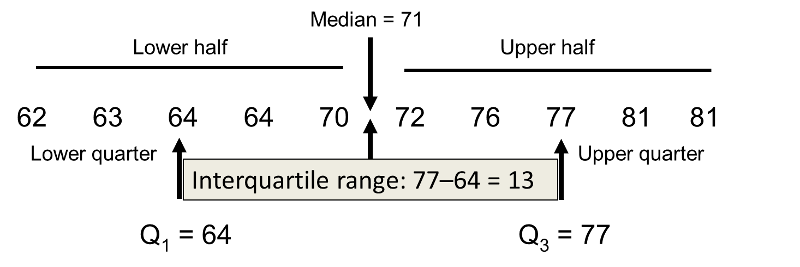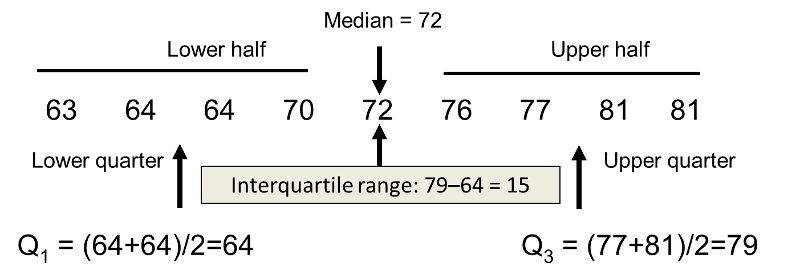Interquartile Range (IQR) | Definition, Formula & Examples
Table of Content:
Interquartile Range
The Interquartile Range (IQR) is a measure of variability or spread in a dataset. It is defined as the difference between the upper and lower quartiles in a dataset. The upper quartile (Q3) is the 75th percentile, and the lower quartile (Q1) is the 25th percentile. The IQR captures the middle 50% of the data and is less sensitive to outliers than the range. It is often used to identify and analyze the spread of data in statistical analyses, such as box plots.
With an Even Sample Size:
For the sample (n=10) the median diastolic blood pressure is 71 (50% of the values are above 71, and 50% are below). The quartiles can be determined in the same way we determined the median, except we consider each half of the data set separately.

There are 5 values below the median (lower half), the middle value is 64 which is the first quartile. There are 5 values above the median (upper half), the middle value is 77 which is the third quartile. The interquartile range is 77 – 64 = 13; the interquartile range is the range of the middle 50% of the data.
With an Odd Sample Size:
When the sample size is odd, the median and quartiles are determined in the same way. Suppose in the previous example, the lowest value (62) were excluded, and the sample size was n=9. The median and quartiles are indicated below.

When the sample size is 9, the median is the middle number 72. The quartiles are determined in the same way looking at the lower and upper halves, respectively. There are 4 values in the lower half, the first quartile is the mean of the 2 middle values in the lower half ((64+64)/2=64). The same approach is used in the upper half to determine the third quartile ((77+81)/2=79).